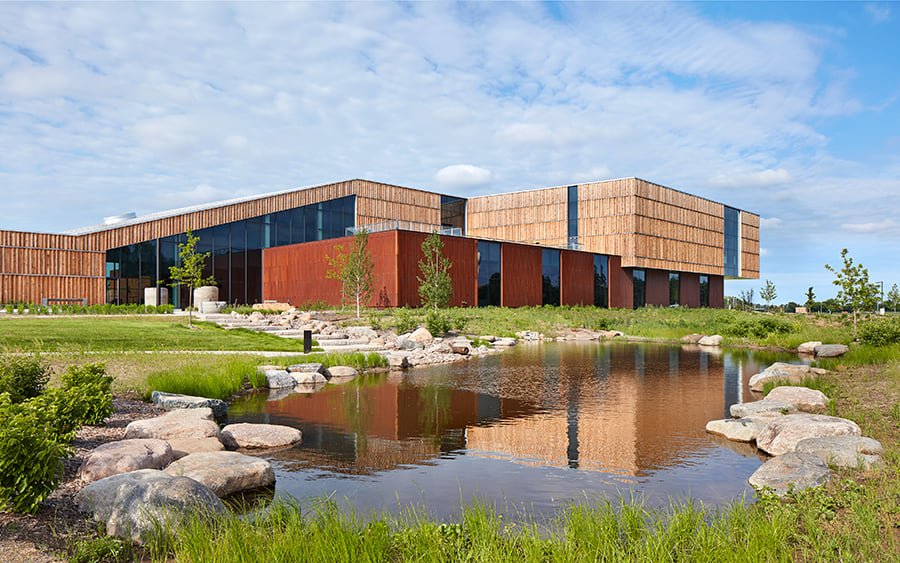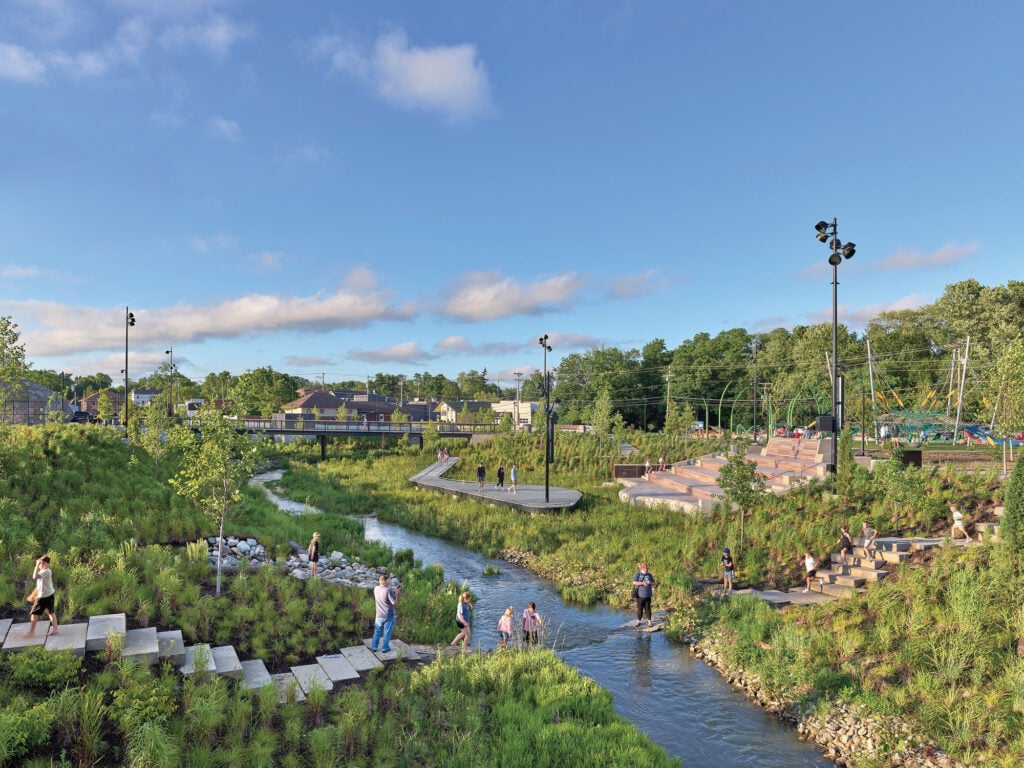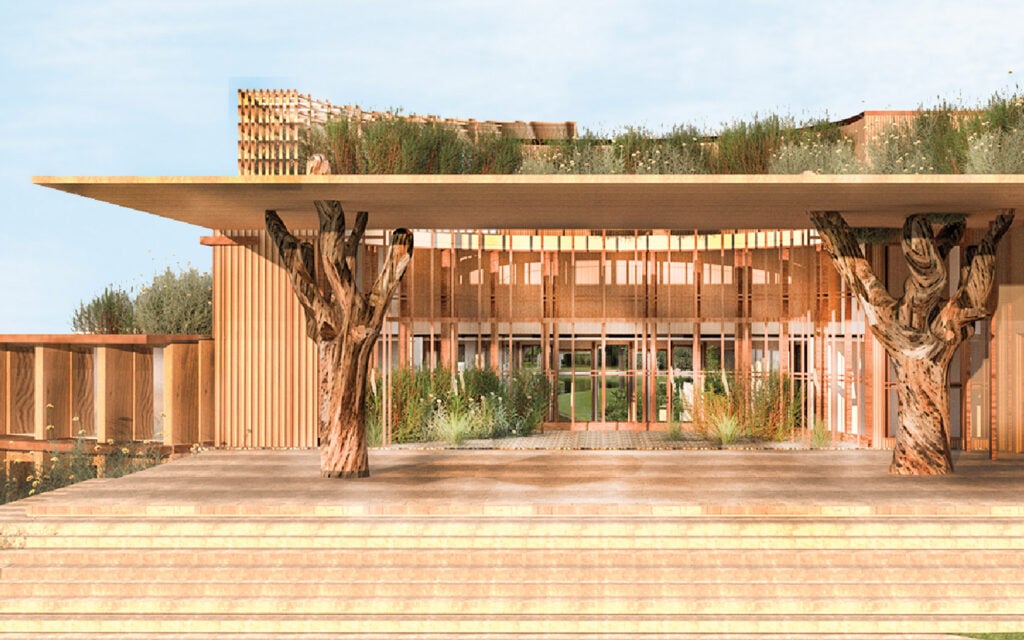
How Outdoor Amenities Can Help With Climate Action and Resilience
“Climate change and Biodiversity are twin crises, where landscape architects can do what no other building professional can do,” says Eustacia Brossart, research director, Climate Positive Design. How can designers of all types make the most out of such an opportunity? Brossart asks, “Can we design plazas smarter for both carbon emissions and biodiversity?” The following resources, including the ASLA’s Guides to Climate Advocacy and Climate Mitigation, should provide a thorough starting point for how architects and designers can consider resilience when designing amenities spaces.
Scroll down for a list of design and architecture resources or consult the full METROPOLIS Outdoor Amenities Resource.
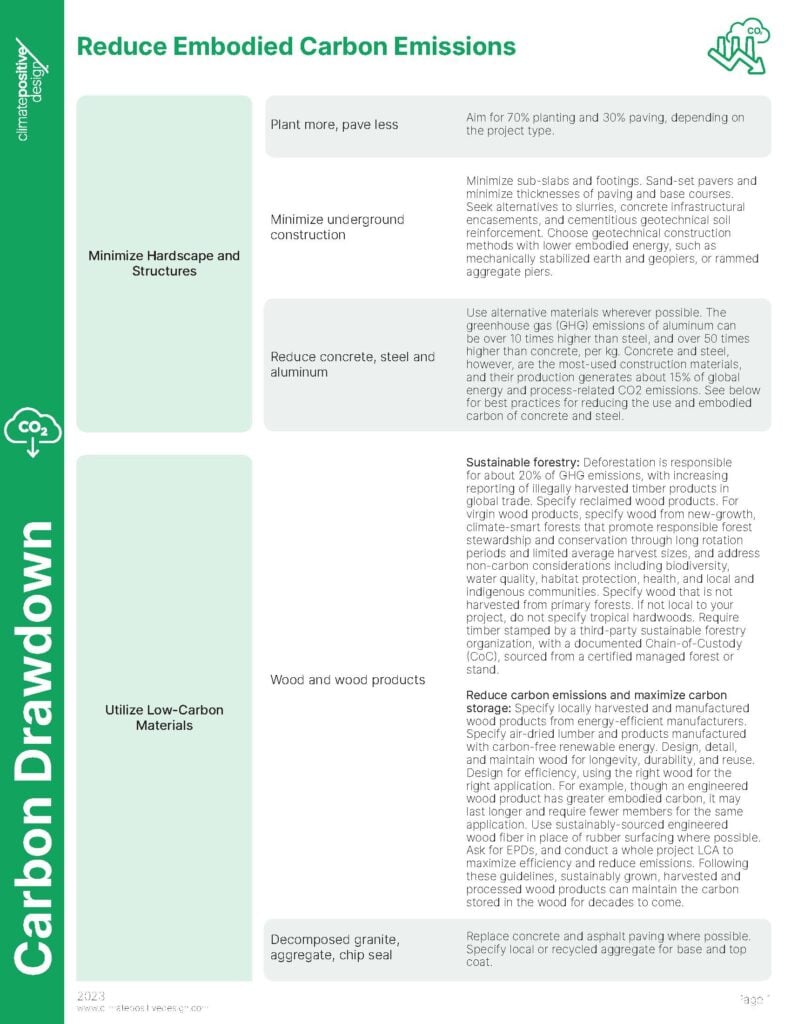
Climate Positive Design, Climate Positive Design Toolkit
For years, the carbon emissions of designed landscapes tended to be overlooked but the launch of Pathfinder, a landscape-focused carbon calculator, and the Climate Positive Design Challenge in 2019 brought the topic to the fore of the profession. Informed by the application of Pathfinder on real-world projects and the latest data on global climate change, the Climate Positive Design Toolkit provides simple, evidence-based strategies for reducing a project’s carbon footprint while maximizing its potential to sequester atmospheric carbon through vegetation and soils. (Strategy number one: “Plant more, pave less.”) Broken into four broad categories (Carbon Drawdown, Climate Resilience, Equity, and Advocacy) and covering topics as detailed as paving alternatives and plant spacing strategies, the toolkit is particularly useful as a starting point when fine-grained carbon calculations aren’t feasible.

American Society of Landscape Architects, Climate Action Now: A Landscape Architect’s Guide to Climate Advocacy
Expanding the conception of the landscape architect to that of citizen, advocate, even activist, Climate Action Now: A Landscape Architect’s Guide to Climate Advocacy offers practical ways to put climate concerns front and center in a landscape practice. From building coalitions and networks around local climate concerns to refusing to participate in projects that are inequitable or environmentally irresponsible, the set of strategies provides a framework for how to incrementally shift design culture toward one that is as ethical and climate-conscious as it often purports. Interspersed with brief profiles of climate leaders within the profession, the document is designed to help landscape architects become more effective organizers and advocates so that they can play an active role in shaping policy.

Smart Surfaces Coalition, Smart Surfaces Coalition – heat island mitigation, stormwater management, climate change mitigation, adaptation, and equity through smart surfaces in cities
As city leaders continue to invest in “smart cities” technologies, a different form of urban intelligence is the focus of the Smart Surfaces Coalition. A nonprofit made up of various building industry players, the coalition’s mission is to advance the “rapid, cost-effective global adoption of Smart Surfaces.” According to the group, many of our cities’ climate and health challenges—for instance, urban flooding, extreme heat, declines in biodiversity—stem from, and can therefore be mitigated through, our urban surfaces: parking lots, rooftops, roadways. The coalition’s website offers design professionals a series of reports and analytic tools on surface-based mitigation strategies such as roof coatings, solar panels, green roofs, reflective pavings, bioretention channels, and more.

Gensler, Sustainable Shade Structures
While it rarely gets the media coverage of a major hurricane or wildfire, extreme heat is the deadliest climate threat, claiming as many as 5,000 lives each year. Meanwhile, the dangers of extreme heat are disproportionately felt in communities of color due to higher prevalences of underlying health conditions and the inequitable distribution of things like urban shade canopy. Gensler Research Institute’s Sustainable Shade Structures report, released in 2023, details lessons learned from two heat-mitigation projects, one in a predominantly Black and Brown neighborhood in Austin, Texas, and one in an underserved area of San Jose, Costa Rica. Both projects resulted in designs for shade structures—the selection of which was left up to community leaders and other stakeholders—but equally informative for readers is the illustrated and narrative account of the team’s research methodologies, which included community involvement at every stage of the project.

Sasaki, Carbon Conscience
A companion to the Pathfinder carbon calculator, Carbon Conscience similarly allows designers to quantify the amount of carbon certain design decisions produce. Drawing on the research that undergirded its development, the Carbon Conscience guidelines distill many of the lessons learned through the tool’s application, including the importance of limiting development, reusing site materials, and specifying locally made products. The guidelines are divided into two main sections. The first outlines key principles for low-carbon site design. The second provides recommendations for how to amend standard construction contracts to ensure decarbonization goals, such as a requirement to estimate the probable carbon emissions of individual processes or to develop and follow a tree- and vegetation-protection plan.

Landscape Design for Carbon Sequestration
To bridge the gap between the scientific literature on carbon sequestration and standard landscape practice, Landscape Design for Carbon Sequestration offers an actionable framework for how landscape architects can use design to store more carbon. Unlike other carbon-focused guides, the strategies here, which were developed by then-University of Oregon masters student Deanna Lynn in 2020, emphasize soil carbon sequestration and other subsurface ecological processes. Informed by extensive research into how “plant traits, plant diversity, soil microbial communities, soil health, and management practices impacted above- and belowground carbon sequestration,” the accessible guide includes strategies for design, installation, and management, as well as an illustrated toolkit covering tactics for maximizing biomass and biodiversity and increasing functional plant diversity in designed landscapes.

American Society of Landscape Architects, Climate Mitigation in Landscape Architecture Guide
Acknowledging the immense challenge posed by global climate change and landscape’s role in averting the worst of its impacts, ASLA’s Climate Mitigation in Landscape Architecture Guide is an encyclopedia of climate resources, from UN Environment’s 2017 Emissions Gap Report to an EPA inventory of greenhouse gas emissions and sinks. A quick guide to domestic and international climate organizations, federal research aggregators, and basic information on carbon markets, the guide is in many ways a “list of lists,” an evolving compendium that serves as a clearinghouse of the world’s climate knowledge. Intended as a living resource, ASLA is actively updating the list and invites practitioners and others to submit research, news articles, and case studies they would like to see included.
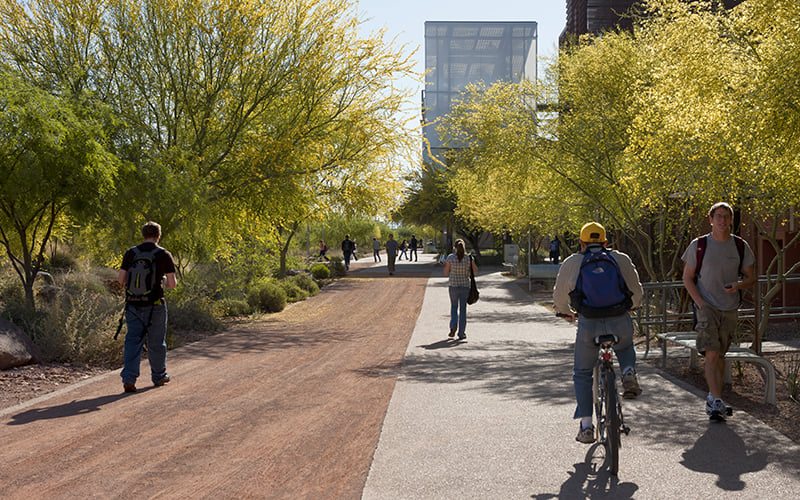
American Society of Landscape Architects, Resilient Design Guide
To build more climate-resilient communities, ASLA put together this free, online resource to guide future landscape projects. With dozens of case studies spanning nearly every project scale, the Resilient Design Guide tackles landscape design for drought, flooding, and extreme heat, as well as wildfire, landslides, and biodiversity loss. In each case emphasizing the co-benefits that accompany living systems such as green infrastructure and other nature-based solutions, the examples provided range from public parks to municipal design standards and cover a significant portion of the globe, including projects in India, Colombia, Spain, Canada, the U.S., and the Netherlands. Each section concludes with a list of additional resources, from policy guidance and government initiatives to interviews with some of the discipline’s leading climate experts.

NYCParks, Design and Planning for Flood Resilience Guidelines for NYC Parks
City leaders are gradually beginning to acknowledge that coastlines and waterfronts often represent a community’s first defense against the impacts of climate change. NYC Parks’ Design and Planning for Flood Resilience Guidelines for NYC Parks offers a framework, along with technical guidance and case studies, for how to enhance the natural resilience of shoreline environments through ecologically informed planning, design, and construction. Broken up by site typology (e.g., boardwalks and beaches, playgrounds and outdoor fitness areas, and wetlands and natural areas), the guide offers key concepts and best practices for each, including relevant construction details. Though developed for a post-Sandy New York City, the general strategies and best practices offered in this guide have applicability to coastal and waterfront communities around the globe.
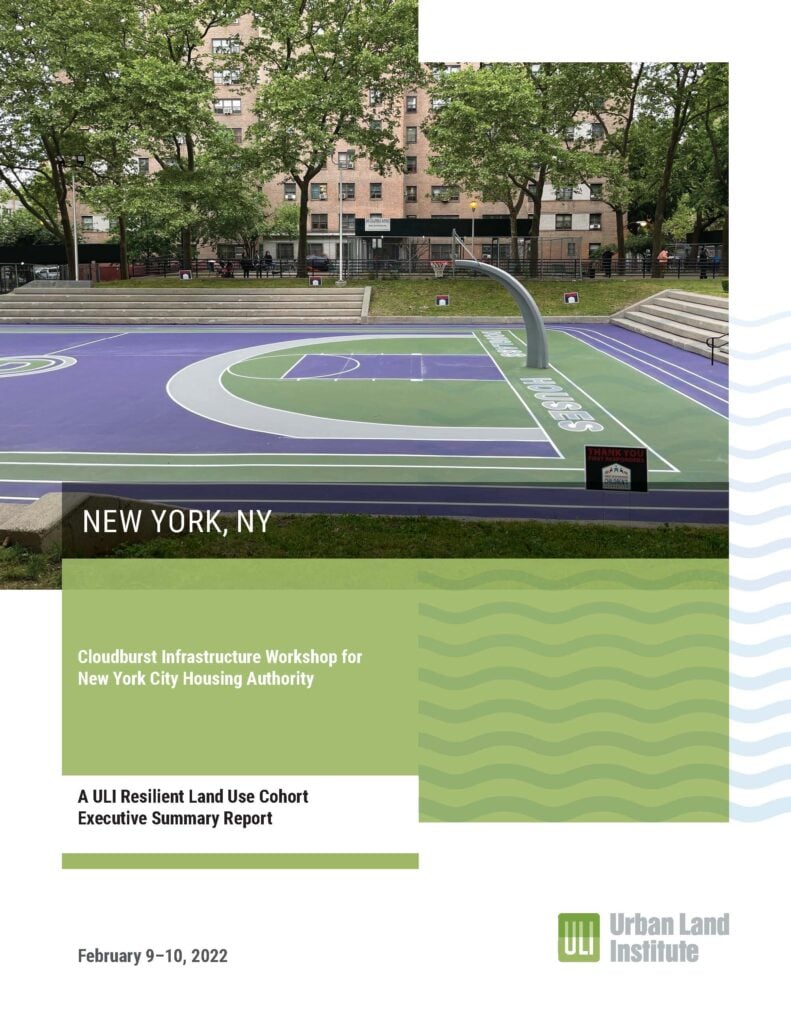
Marvel, Cloudburst Infrastructure Workshop for New York City Housing Authority
A cloudburst is a sudden, extreme rainfall event, of the kind that devastated portions of Copenhagen in 2011, causing an estimated $880 million in damage. To prepare New York City for the projected increased frequency and severity of cloudbursts, the Urban Land Institute’s Urban Resilience program collaborated with the New York City Housing Authority to create a guide to designing for sudden severe rainfall events. The resulting strategies, produced through a one-day workshop with design professionals and NYCHA staff, are scaled for the typical size and program of NYCHA properties and designed to provide multiple benefits beyond the management of stormwater. Breaking down housing campuses into their building, pathways, streets and parking, and open space components, the amply illustrated design guide provides practical advice on how sites can slow, store, and restore water resources.

Explore the entire Outdoor Amenities Resource here.
The Outdoor Amenities Resource was produced in partnership with Expormim, KFI Studio, Landscape Forms, and Tuuci, with the participation of RIOS, SWA Group, Marvel Architects, Matthews Neilsen (MNLA), Climate Positive Design, and Perkins&Will.
Related Articles on Climate Action and Resilience Through Outdoor Amenities
Read More
Viewpoints
In the Face of Climate Change, Architects Must Consider Local Ecology and Social Context
Energy efficiency has long been the holy grail of sustainable architecture, firms are shifting the discourse to the more multifaceted and preventive realm of resilience.
Projects
Grand Junction Is the Rust Belt’s First Climate-Resilient Park
In Westfield, Indiana, a consortium of architects, landscape architects, and designers join together to transform a creek from a flood risk into a community jewel.
Projects
How This Mixed-Use Complex Improves Seattle’s Water Quality
Designed by Weber Thompson, Watershed takes on ecological responsibilities that reach far beyond its site.
Would you like to comment on this article? Send your thoughts to: [email protected]
Latest
Profiles
WAI Architecture Think Tank Approaches Practice as Pedagogy
Nathalie Frankowski and Cruz García use their practice to help dismantle oppressive systems, forge resistance spaces, and reimagine collective futures.
Products
Functional Beauty: Hardware That Does More Than Look Good
Discover new standout pieces that marry form and function, offering both visual appeal and everyday practicality.
Profiles
The Next Generation Is Designing With Nature in Mind
Three METROPOLIS Future100 creators are looking to the world around them for inspiration.



